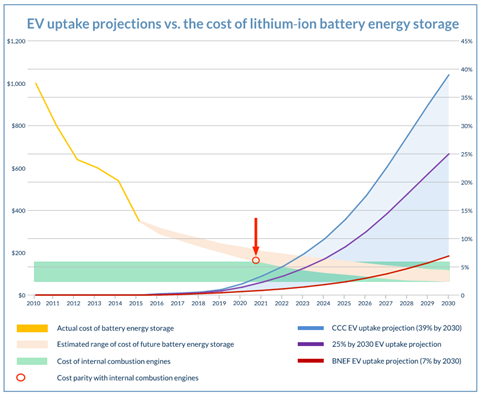Electric vehicles (EVs) have had a meteoric rise in the UK and developers are beginning to recognise the implications for the housing sector.

Chris Evans, deputy managing director at Rolton Group, advises developers how to overcome the challenges thrown up by the EV revolution and how to seize the opportunity to carve out a competitive advantage.
By 2050, it’s predicted that EVs will account for two-thirds of all vehicles on UK roads. Although it is widely acknowledged that this revolution brings many challenges, the commercial opportunities are less well recognised. For the construction industry, EV adoption brings an opportunity to showcase progressive solutions to the growing need for charging. As well as responding to homeowners’ needs, developers that embrace EV charging will find themselves ahead of the game.
With the government tasking the construction industry with building 300,000 new homes a year by the middle of the next decade, developers should be asking themselves if they are fully prepared for the impact EVs will have on the power supply for residential developments.
The increase and variety of EV charging options is also bringing greater complexity across the charging network. As yet, there is no standardised system in the UK for EV charge points. Understanding the diversity and what will be most suitable now - and into the future - is crucial. The challenge developers face is to use new technologies, engineering and experience to deliver smart solutions that meet the evolving needs of homeowners and businesses by implementing a future-proof energy infrastructure.

The government’s ban of solely diesel and petrol cars sales by 2040 means the clock is now ticking. Progressive housebuilders have an opportunity to differentiate themselves by installing charging points at new developments – this could boost house prices and sales, raise their brand profile and help meet sustainability targets.
Installing communal charging areas could also provide an ongoing source of income from residents paying to charge EVs, and communal charging facilities could potentially be sold as part of the development to management companies. In time, there is even the possibility of EV batteries using the shared facility and being combined as part of an energy storage solution (Vehicle-2-Grid system), providing an income stream by selling energy back to the grid.

For mixed use schemes, considering how commercial and residential spaces will share the energy infrastructure will be essential. On larger schemes, commercial areas could provide space for decentralised energy generation to support increased electrical demands across the entire site.
Off-grid renewable power supply solutions - such as waste to energy plants, PV or wind turbines - would not only facilitate EV power requirements (at least in part) but would also secure future energy supply on site. In addition, such schemes would go towards meeting developers’ environmental targets.
There is a clear window of opportunity for progressive developers to steal a march on the competition, maximise the commercial potential of EVs and carve out a market-leading brand position. Yet, while a few developers may be blazing a trail for others to follow, that will only take us so far. The government must take a more holistic approach - combining housing, infrastructure, energy and transport strategies. If the UK is to realise its bold ambitions, it is imperative that policymakers collaborate effectively with developers and the energy industry to overcome the challenges of the brave new world we’re creating.






























No comments yet